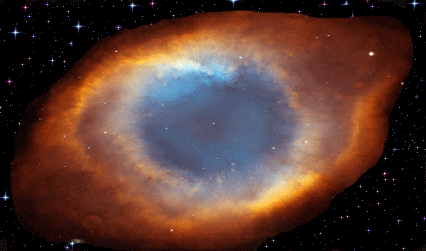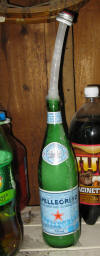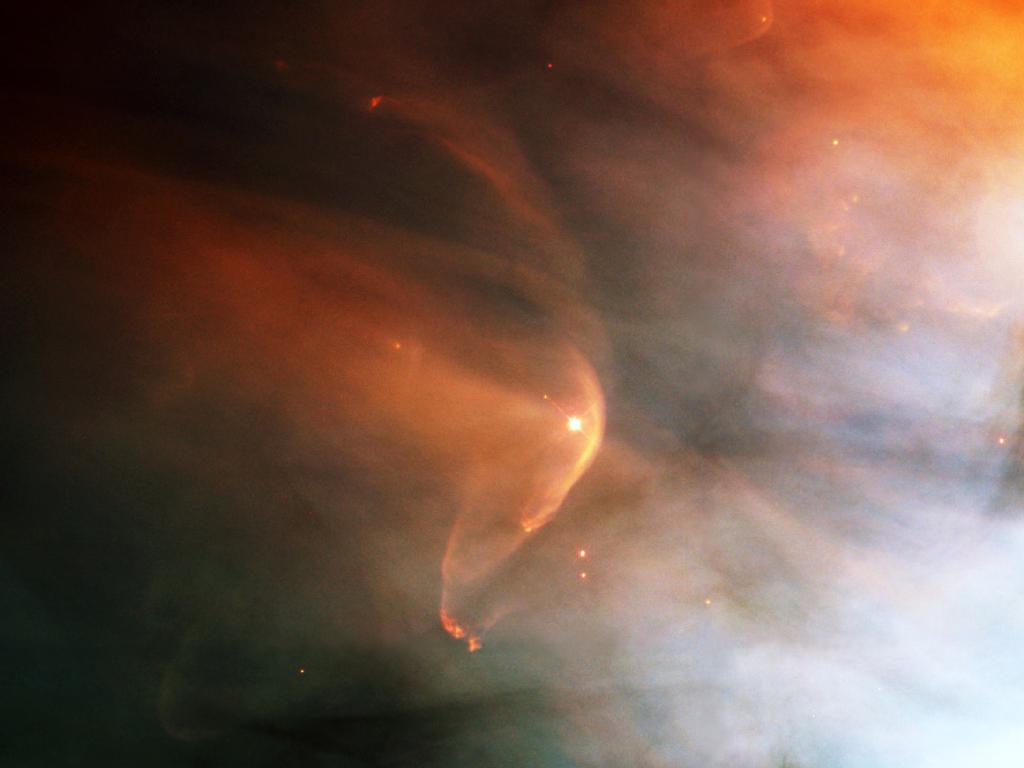
Return to Index
Revealing the stunning and intricate
treasures that reside within the nearby,
intense star-forming region known as the
Great Nebula in Orion, the Hubble Space
Telescope focused on one such jewel--a bow
shock around the very young star, LL Ori.
Named for the crescent-shaped wave made by a
ship as it moves through water, a bow shock
can be created in space when two streams of
gas collide. LL Ori emits a vigorous solar
wind, a stream of charged particles moving
rapidly outward from the star. Our own sun
has a less energetic version of this wind
that is responsible for auroral displays on
the Earth.
The material in the fast wind from LL Ori
collides with slow-moving gas evaporating
away from the center of the Orion Nebula,
which is located to the lower right in this
Heritage image. The surface where the two
winds collide is the crescent-shaped bow
shock seen in the image.
Unlike a water wave made by a ship, this
interstellar bow shock is a
three-dimensional structure. The filamentary
emission has a very distinct boundary on the
side facing away from LL Ori, but is diffuse
on the side closest to the star, a
characteristic common to many bow shocks.
This image was taken in February 1995 as
part of the Hubble Orion Nebula mosaic.
Image Credit: NASA and The Hubble
Heritage Team (STScI/AURA)
|
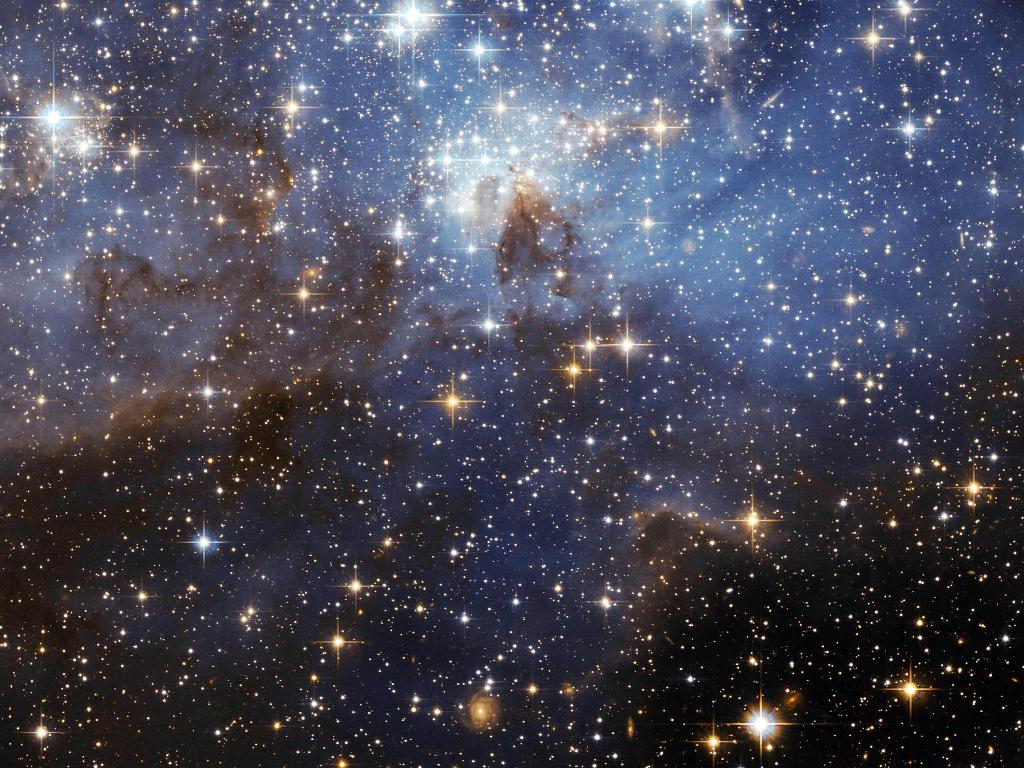
Return to Index
Swirls of gas and dust reside in this
ethereal-looking region of star formation
seen by NASA's Hubble Space Telescope. This
majestic view, located in the Large
Magellanic Cloud (LMC), reveals a region
where low-mass, infant stars and their much
more massive stellar neighbors reside. A
shroud of blue haze gently lingers amid the
stars.
Known as LH 95, this is just one of the
hundreds of star-forming systems, called
associations, located in the LMC some
160,000 light-years distant. Earlier
ground-based observations of such systems
had only allowed astronomers to study the
bright blue giant stars present in these
regions. With Hubble's resolution, the
low-mass stars can now be analyzed, which
will allow for a more accurate calculation
of their ages and masses.
Credit: NASA, ESA, and the Hubble
Heritage Team (STScI/AURA)-ESA/Hubble
Collaboration
|
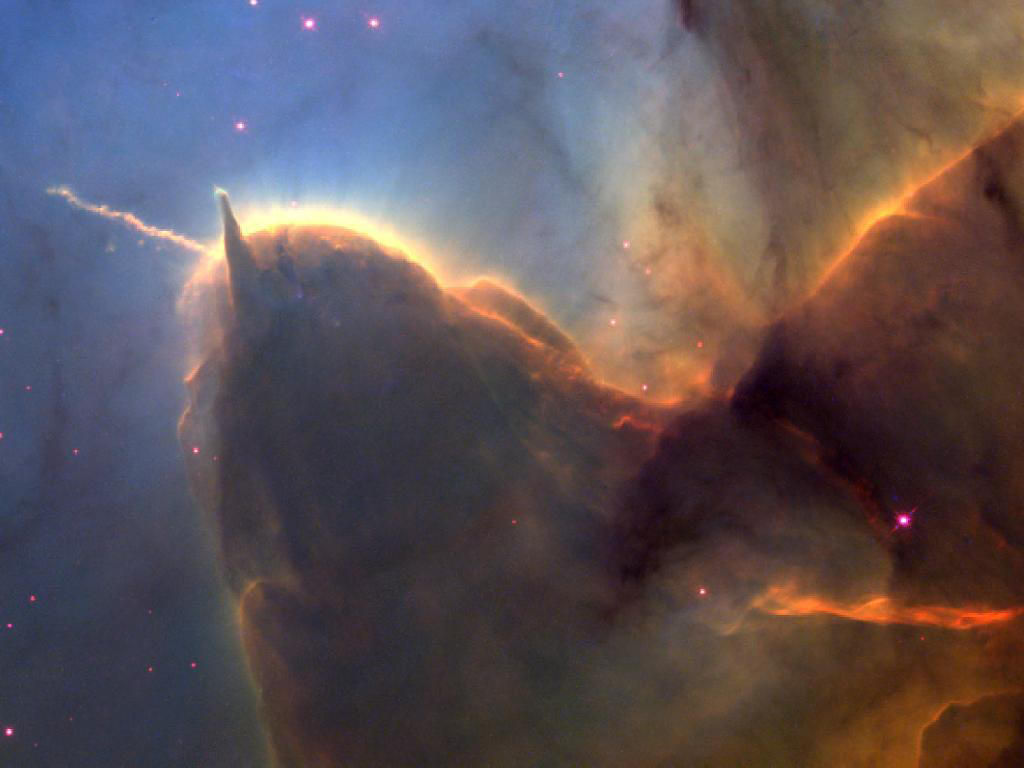
Return to Index
Dust
pillars are like interstellar mountains.
They survive because they are more dense
than their surroundings; however, they are
being slowly eroded by a hostile
environment. Visible in the image above is
the end of a huge gas and dust pillar in the
Trifid Nebula, punctuated by a smaller
pillar pointing up and an unusual jet
pointing to the left. The pink dots are
newly formed low-mass stars.
Image Credit: NASA, HST, WFPC2
|
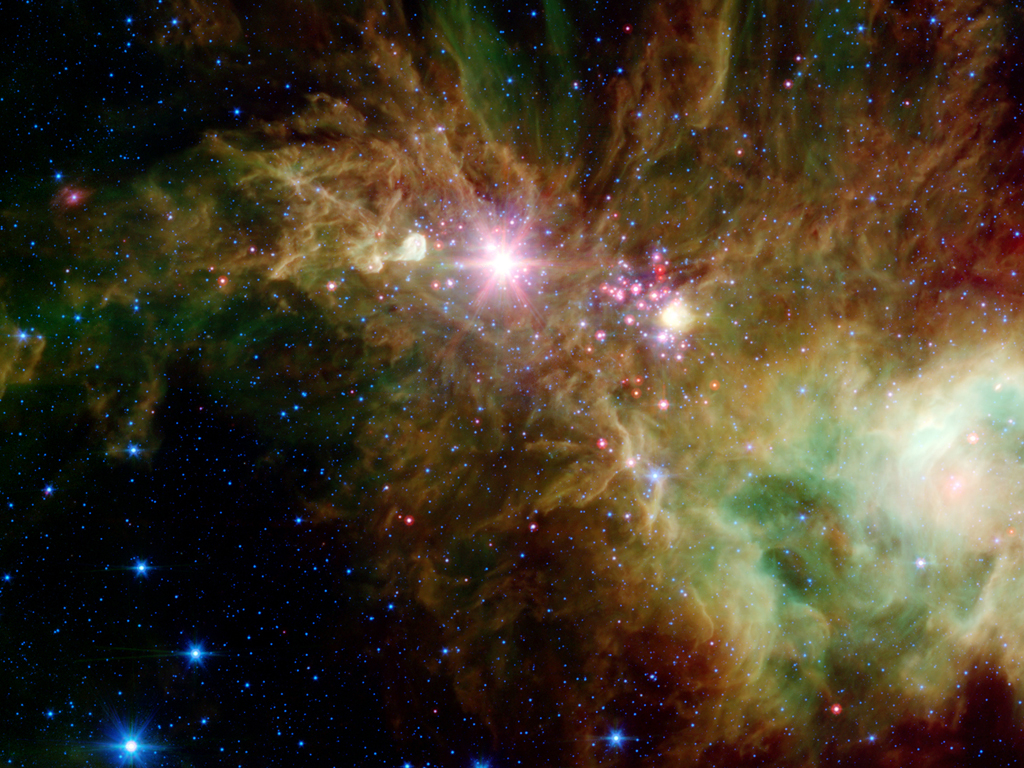
Return to
Index
Like
cascading snowflakes in the interstellar
night, the strange shapes and textures of
the stars in the Snowflake Cluster abound in
the Cone Nebula. These patterns result from
the tumultuous unrest that accompanies the
formation of the open cluster of stars known
as NGC 2264. Bright stars from the cluster
dot the field and they soon heat up and
destroy the gas and dust mountains in which
they formed. One such dust mountain is the
famous Cone Nebula, visible in the above
image on the left, pointing toward a bright
star near the center of the field.
Image Credit: NASA, JPL-Caltech, P. S.
Teixeira (CfA)
|
|
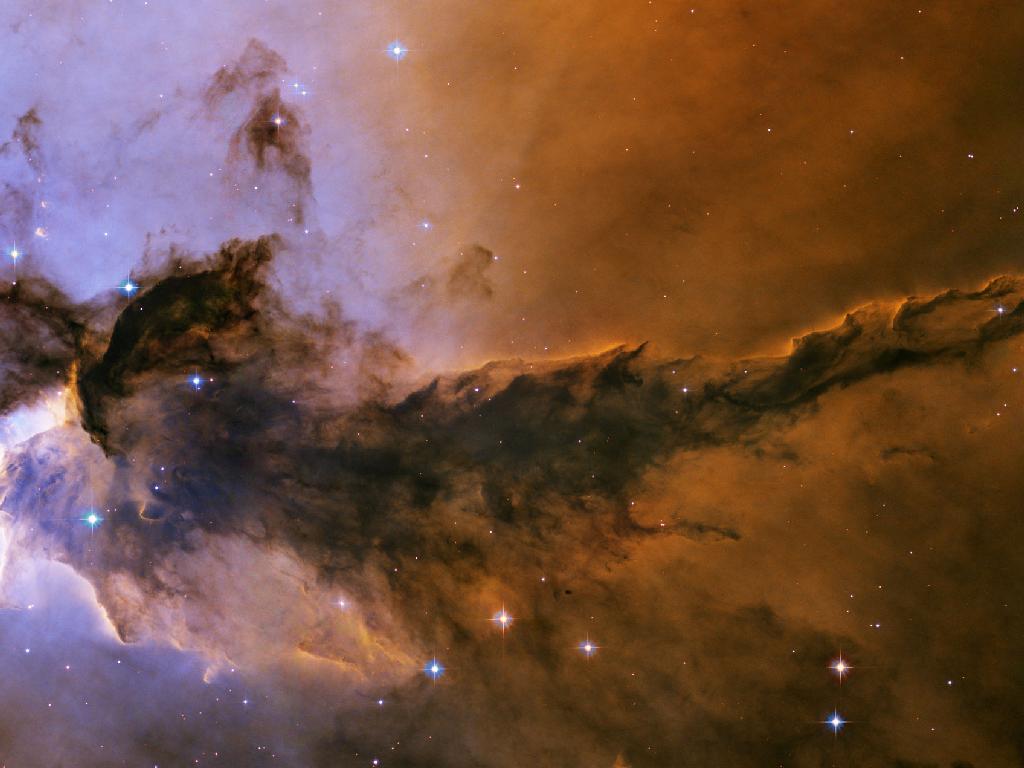
Return to Index
The dust
sculptures of
the Eagle Nebula
are evaporating.
As powerful
starlight
whittles away
these cool
cosmic
mountains, the
statuesque
pillars that
remain might be
imagined as
mythical beasts.
Pictured above
is one of the
Eagle Nebula's
striking dust
pillars that
could be
imagined as a
gigantic fairy.
This fairy,
however, does
not grant
wishes; instead,
it is ten
light-years tall
and spews
radiation much
hotter than
common fire. The
greater Eagle
Nebula, M16, is
actually a giant
evaporating
shell of gas and
dust inside of
which is a
growing cavity
filled with a
spectacular
stellar nursery
currently
forming an open
cluster of
stars. The above
image was
released as part
of the fifteenth
anniversary
celebration of
the launch of
the Hubble Space
Telescope.
Image Credit:
NASA, ESA, STScI/AURA
|
|
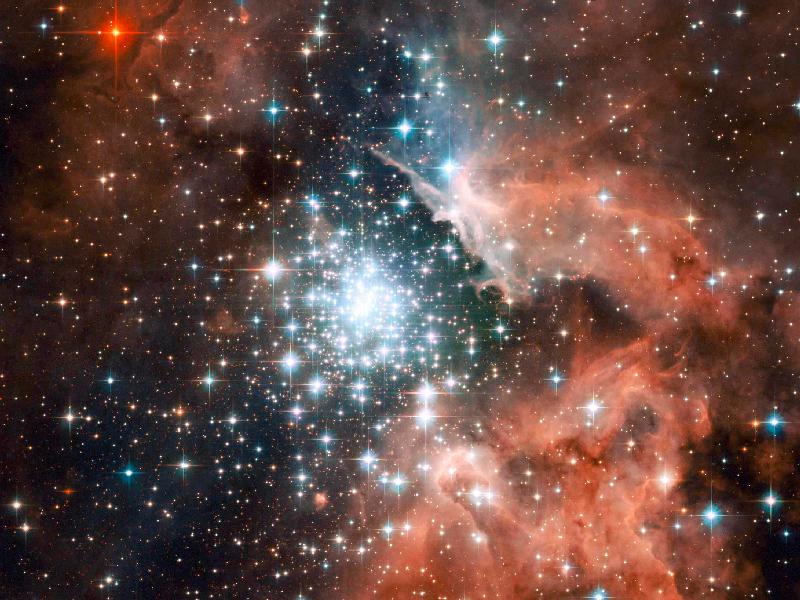
Return to
Index
Thousands
of sparkling young stars are nestled within
the giant nebula NGC 3603, one of the most
massive young star clusters in the Milky Way
Galaxy.
NGC 3603, a prominent star-forming region in
the Carina spiral arm of the Milky Way about
20,000 light-years away, image reveals
stages in the life cycle of stars.
Powerful ultraviolet radiation and fast
winds from the bluest and hottest stars have
blown a big
bubble around
the cluster.
Moving into the
surrounding
nebula, this
torrent of
radiation
sculpted the
tall, dark
stalks of dense
gas, which are
embedded in the
walls of the
nebula. These
gaseous
monoliths are a
few light-years
tall and point
to the central
cluster. The
stalks may be
incubators for
new stars.
On a smaller
scale, a cluster
of dark clouds
called "Bok"
globules resides
at the top,
right corner.
These clouds are
composed of
dense dust and
gas and are
about 10 to 50
times more
massive than the
sun. Resembling
an insect's
cocoon, a Bok
globule may be
undergoing a
gravitational
collapse on its
way to forming
new stars.
The nebula was
first discovered
by Sir John
Herschel in
1834.
Image Credit:
NASA, ESA, and
the Hubble
Heritage (STScI/AURA)-ESA/Hubble
Collaboration
|
|
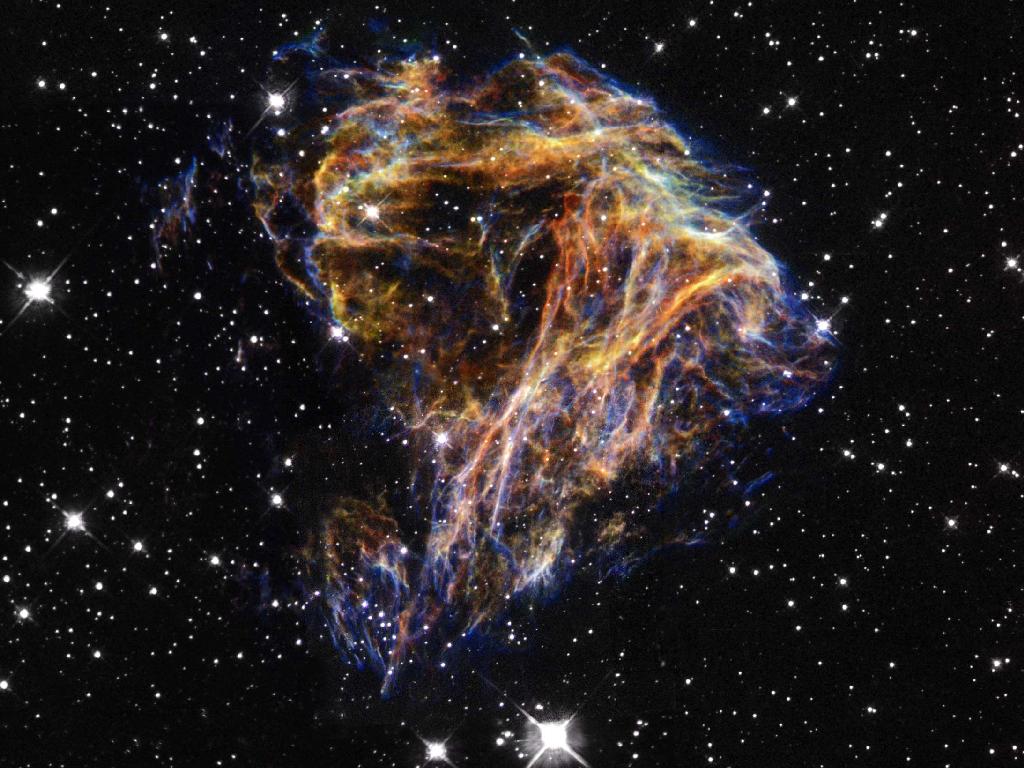
Return to Index
Resembling the
puffs of smoke
and sparks from
a summer
fireworks
display, this
Hubble image
depicts the
delicate
filaments debris
from a stellar
explosion in a
neighboring
galaxy.
Denoted N 49, or
DEM L 190, this
remnant is from
a massive star
that died in a
supernova blast
whose light
would have
reached Earth
thousands of
years ago. This
filamentary
material will
eventually be
recycled into
building new
generations of
stars. Our own
sun and planets
are constructed
from similar
debris of
supernovae that
exploded in the
Milky Way
billions of
years ago.
This seemingly
gentle structure
also harbors a
very powerful
spinning neutron
star that may be
the central
remnant from the
initial blast.
It is quite
common for the
core of an
exploded
supernova star
to become a
spinning neutron
star (also
called a pulsar
because of the
regular pulses
of energy from
the rotational
spin) after the
immediate
shedding of the
star's outer
layers. In the
case of N 49,
not only is the
neutron star
spinning at a
rate of once
every 8 seconds,
it also has a
super-strong
magnetic field a
thousand
trillion times
stronger than
Earth's magnetic
field. This
places this star
into the
exclusive class
of objects
called magnetars.
Image Credit:
Image Credit:
NASA, The Hubble
Heritage Team (STScI/AURA),
Y.-H. Chu (UIUC),
S. Kulkarni
(Caltech) and R.
Rothschild (UCSD)
|
|
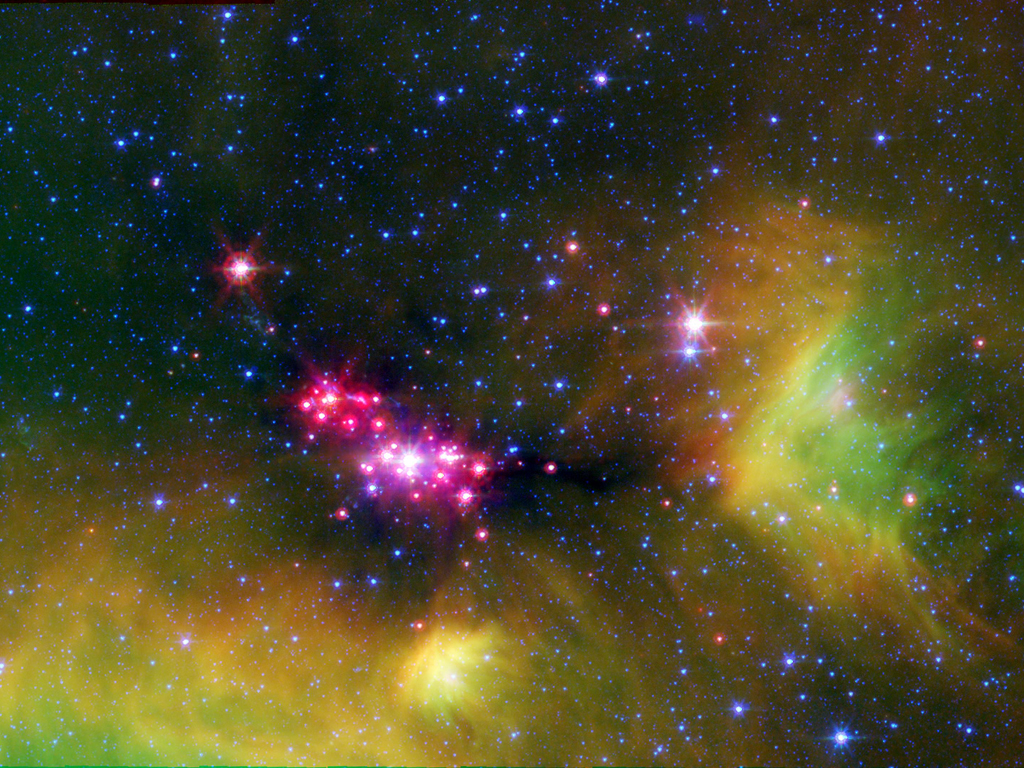
Return to
Index
Infant stars glow gloriously in this infrared image of the Serpens Constellation's star-forming region, located approximately 8484 light-years away.
Glowing pink baby stars are embedded in the cosmic cloud of gas and dust that collapsed to create them. Dusty disks of cosmic debris that may eventually form planets surround the stars in this image taken by the Spitzer Space Telescope.
Image credit: NASA/JPL/University of Arizona
|
|







